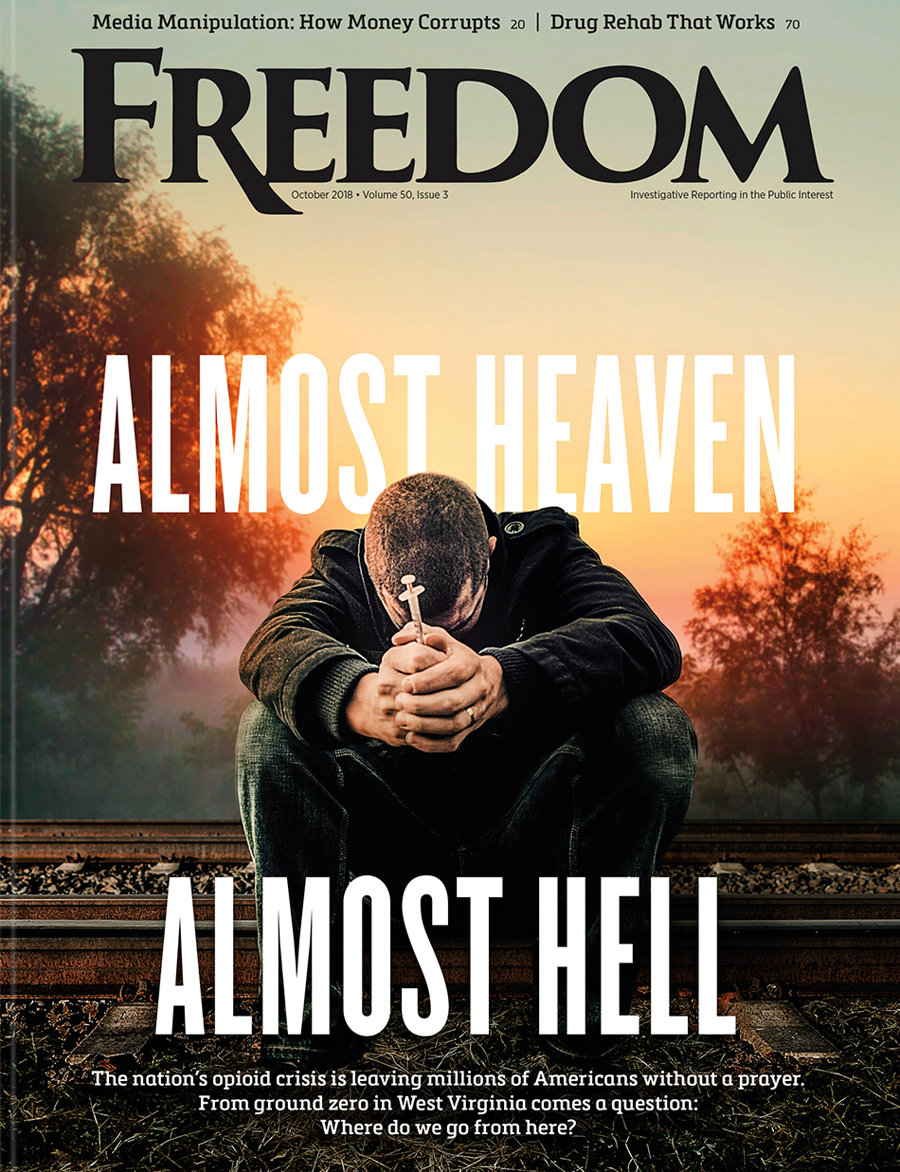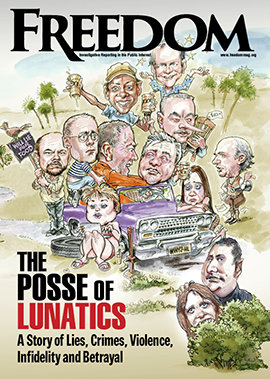The heavens didn’t open and the earth did not shake. For Nicole Crellin, the farm girl from Ontario, Canada, there was no sudden epiphany, no thunderbolt of inspiration that catapulted her into becoming the dauntless human rights crusader she is today. The passion was already there without the help of hellfire or a bolt from the blue.
“I have never experienced anything like ‘Oh, my brother was killed because I was a rebel,’ or anything like that,” she told Freedom. “It just came naturally. I’ve just found myself in a position to expose human rights violations throughout my life, not even thinking ‘This is called human rights.’ It was more like: ‘This is not OK.’ It was just… obvious.”
Nicole Crellin, whose work is now the subject of a Voices for Humanity episode on Scientology Network, believes that human rights are a no-brainer. They’re simply the right way to treat one another.
“People coming from other countries see Canada as a land of freedom. Except that when you lift up the veil, you see a different picture.”
When, in 1948, the newly formed United Nations codified and approved the Universal Declaration of Human Rights (UDHR) and its 30 articles, Human Rights Commission Chair Eleanor Roosevelt knew they wouldn’t be legally binding. She hoped, however, that they would have the “moral” force necessary to “guide and inspire individuals and groups throughout the world… to promote respect for human rights.”
One group that hallowed document inspired is Youth for Human Rights International (YHRI). This global nonprofit aims to teach youth about human rights, specifically through the UDHR, and inspire them to become advocates for tolerance and peace.
Nicole’s native land, Canada, is renowned for championing human rights. One of the most multicultural countries in the world, America’s neighbor to the north has over 250 ethnicities and one of the largest immigrant populations per capita on Earth.

“People coming from other countries see Canada as a land of freedom,” Nicole says. “Except that when you lift up the veil, you see a different picture. You have this false information about these different ethnic groups. There have been fights and quarrels and deaths just because of a person’s country of origin. So my vision is to have different ethnic groups getting along with each other under the banner of human rights.”
As an example of the rot beneath the social veneer, Nicole describes a beautiful park in a multicultural neighborhood. A woman strolling through noticed a group of youth working on something at a picnic table under a tree. When they departed, she approached the table to see their handiwork. “When she arrived, there was hate graffiti on the table—hate slurs inciting violence and death.”
That incident is borne out by the statistics, which is why Nicole has her work cut out for her. In a single year, hate crimes in Canada increased by 80 percent, and one is committed every three hours.
At a church in Toronto, bricks were thrown through the stained glass windows. Paint defaces the exteriors at other houses of worship, while headlines tell of vandalized mosques. Canadian citizens have been turned away from boarding a bus because of their skin color.
Human trafficking, too, has been a growing problem in the country, with indigenous women and girls particularly at risk.
A teacher by trade, Nicole knew education—broad human rights education—was the ultimate solution to these insults to human nature. Again, it was a no-brainer: Human rights are the way people should treat each other. And if they could be educated from an early age to hate and mistreat one another, they surely could be taught to treat others with decency and respect. But how?
Asked by a friend to host a human rights luncheon, Nicole discovered her answer.
“That was the first time that I was introduced to the Youth for Human Rights campaign and the materials. The What Are Human Rights? booklets, the PSAs on the 30 human rights, The Story of Human Rights. When I looked at these materials, I saw that I finally have a tool to teach others about human rights.”
She wasted no time arranging special classes and assemblies on human rights at schools—124 all told. Each time, “when I spoke about the 30 human rights, it resonated with the students,” she says.
She found that classrooms weren’t the only place where human rights resonated.
They resonated with community leaders, civic organizations and with ordinary people who became extraordinary volunteers, all recognizing that, at the end of the day, we’re all human, and there is a right way for humans to treat one another.
The York Regional Police have been one key partner that embraces that truth and shares Nicole’s passion for educating youth. They’ve included human rights education in their unique, interactive Community Safety Village, that students from schools in the area visit to learn basic life skills—personal safety, what to do in case of a fire, how to cross railroad tracks and, now, their 30 human rights. Over 700 children a week enter the village, and exit knowing their human rights.
Nicole Crellin’s current focus is pushing through legislation to make human rights education mandatory in Canadian schools. Petitions are already circulating in Ontario and British Columbia, but the process is slow, at times agonizingly so—enduring the delays, the extended legislative recesses, the bureaucracy.
But in the end, as Nicole puts it, “There’s always a bright light somewhere.”
“I’ve just put in a challenge to a Youth for Human Rights volunteer in British Columbia,” she explains. “Yesterday I said, ‘Hey, let’s have a competition: Let’s see which province gets human rights education in the schools first!’”
“You have to have a game going,” she laughs. “Otherwise it gets boring!”
Nicole says that each day that she joins together those two innocent, innocuous words—human and rights—is a day she gains new knowledge of their true meaning and importance.
And as for the mammoth work required to solder those two words into Canada’s DNA, Nicole tells Freedom that it’s simple: “It’s just a matter of getting good people to do the right thing.”






















